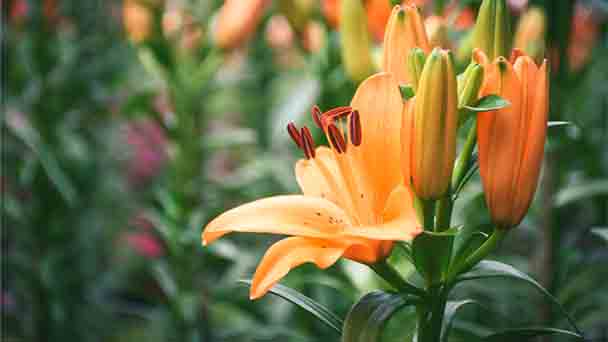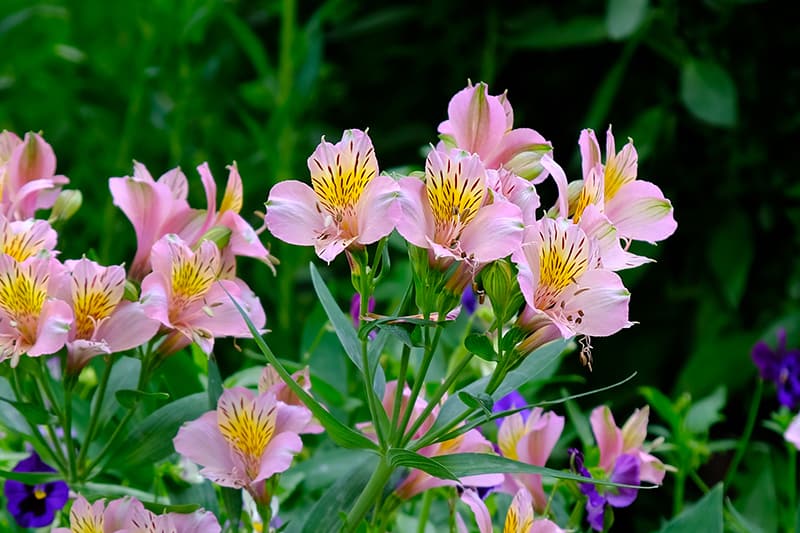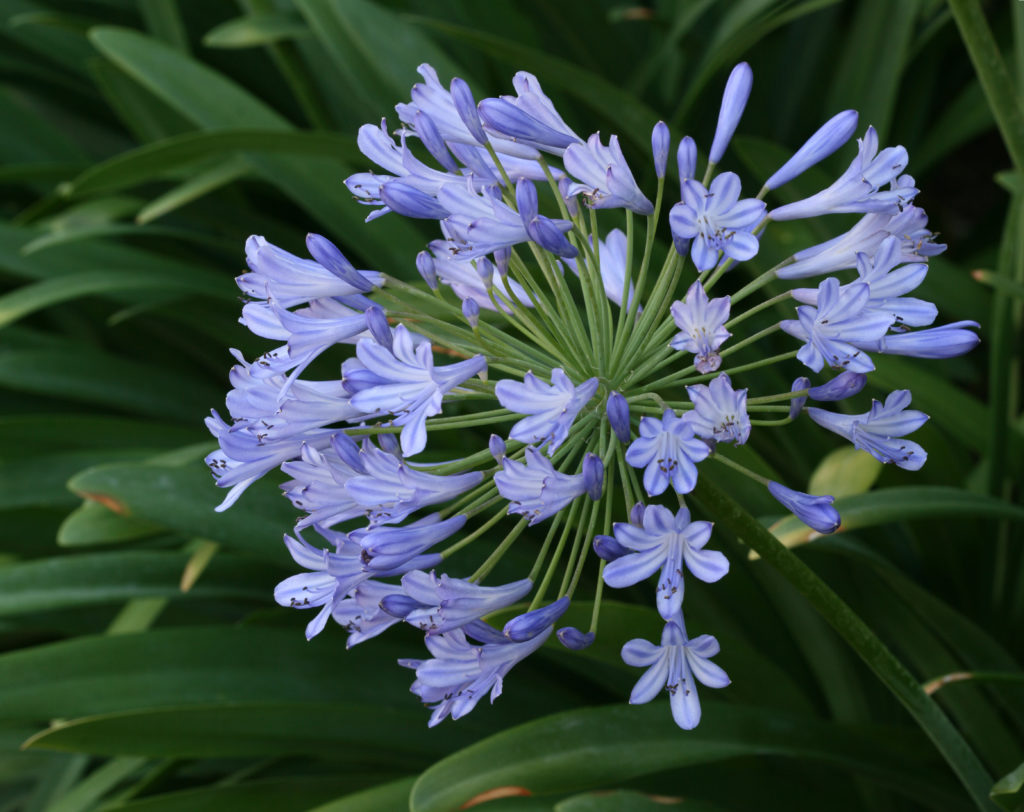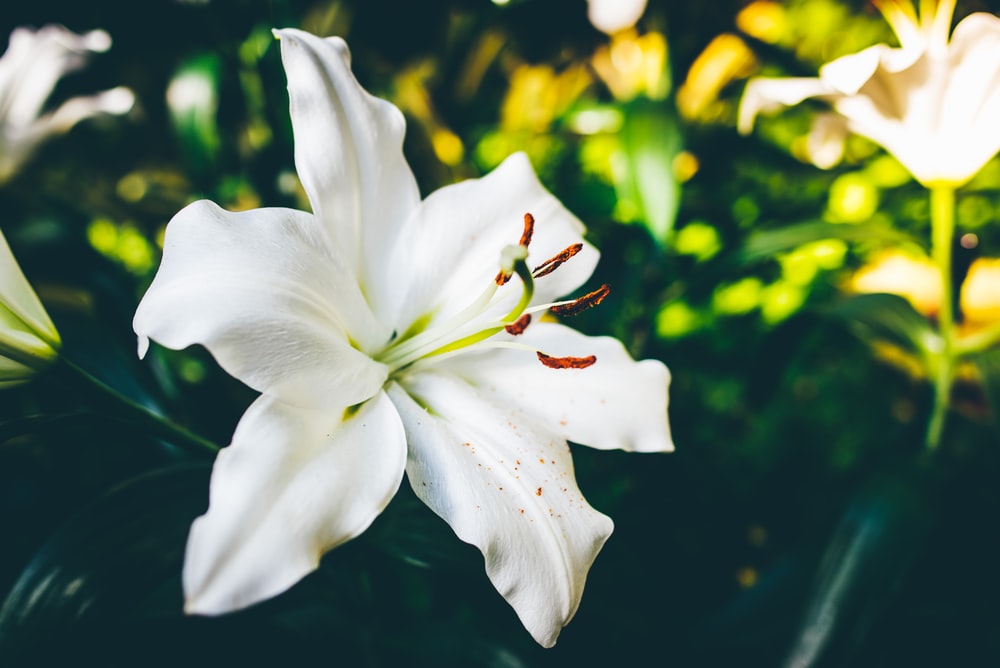Lily flower Profile
Written by admin
Sep 11 2021

is a perennial herbaceous bulbous plant of the lily family. It is native to temperate regions of almost every continent in the northern hemisphere, mainly distributed in eastern Asia, Europe, and North America. More than 110 varieties have been found worldwide, of which 55 are In China. In recent years, there have been many new varieties produced by artificial hybridization, such as Asiatic lilies, lilies, perfume lilies, and sunflower lilies. The lily flower is elegant, the leaves are verdant and the stems are slender, it is a rare cut flower rookie.
Lily flower morphological characteristicsLily flower growth habit and growing environment and distributionThe symbolic meaning of liliesLily flower cultivationSowing reproduction
Lily flower morphological characteristics

Lily flower growth habit and growing environment and distribution
Lilies need moist water for cultivation, which is conducive to the growth of stems and leaves. If the soil is too moist, stagnant or poorly drained, the lily bulbs will rot and die. The watering of potted lilies should be gradually increased with the growth of the plants, the water supply should be sufficient during the flowering period, and the water should be reduced after flowering.
The soil requires fertile, loose and well-drained sandy loam, and the best soil pH is between 5.5 and 6.5. The potting soil is a mixture of leaf mulch, culture soil and coarse sand.
Lily is hardy, but the optimum growth temperature is between 15 and 25 degrees. Lower than 10 degrees or higher than 30 degrees will not grow well. Lilies generally prefer acidic soils with a pH of 5.5 to 6.5.
The symbolic meaning of lilies

At present, lilies are mainly used for ornamental purposes, especially cut flower varieties exported from the Netherlands and Japan. For example, lily musk and its hybrids are one of the most important cuts flower varieties. The bulbs of lilies are rich in starch, and some of them can be eaten as vegetables. In China, the bulbs of lilies can be used to cook soup after drying, and many parts of the plant can be used as medicine. The bulbous roots of lily, mountain lily, and especially brown lily are grown on a large scale in China. The taste and texture are similar to potatoes. They are often sold as dried lilies, which can clear away heat and detoxify and are considered healthy foods. People soak the dried lily and fry it, then crush it for soup or extract starch.
Lily flower cultivation
Sowing reproduction

2. Can be sown in spring and autumn. For spring planters, plant the seeds when the temperature exceeds 30℃ in the second spring. Place the seeds in front of the light before sowing, and pick out seeds with fully developed embryos for sowing. The suitable temperature for germination is 12-15°C. The seeds germinate faster above 15℃, but the seedlings are thin and weak; while below 5℃, they do not germinate.
3. Two parts of fertile loam, one part of coarse sand, and one part of peat soil are used for sowing soil. Add 1 gram of superphosphate per liter.
4. Cover soil 0.5-1 cm after sowing, and cotyledons are unearthed in about 20-30 days. It will bloom after 6 months.
5. In autumn, the plants wither and form small bulbs, which become flowering bulbs after 2 to 3 years of cultivation.
Latest Updated
- Benefits of Bugleweed - 7 Science-backed Health Benefits
- Bugleweed Dangers & Side Effects - Is It Poisonous?
- How to Plant Evergreen Trees - What You Should Know
- When to Plant Evergreens - Grow Guide for Evergreen Trees
- 12 Wonderful Evergreen Shrubs for Your Garden
- 12 Popular Evergreen Plants with Pictures for Beginners
- When And How To Prune A Lilac Bush Like a Pro
- How to Grow & Care for Lilac Vine (Hardenbergia Violacea)
- Japanese Lilac Tree (Syringa Reticulata) Care & Propagation Guide
- Shumard Oak Pros and Cons - What to Know
Popular Articles
- Winter maintenance of Antirrhinum Majus
- How to Grow Terminalia Mantaly Tree
- How to Grow and Care for Crossostephium Chinense
- How to grow Antirrhinum Majus in spring
- Peristeria Elata (Dove Orchid) Profile: Info & Care Guide
- Underwatered Snake Plant (Sansevieria Trifasciata) - Signs And How To Fix
- How to Care for Brazilian Jasmine Plant (Mandevilla Sanderi)
- How to Grow & Care for Graptopetalum Purple Delight in Summer
- Rosa Chinensis (China Rose): Plant Growing & Care Tips
- How to Care for Baby Sun Rose (Aptenia Cordifolia)